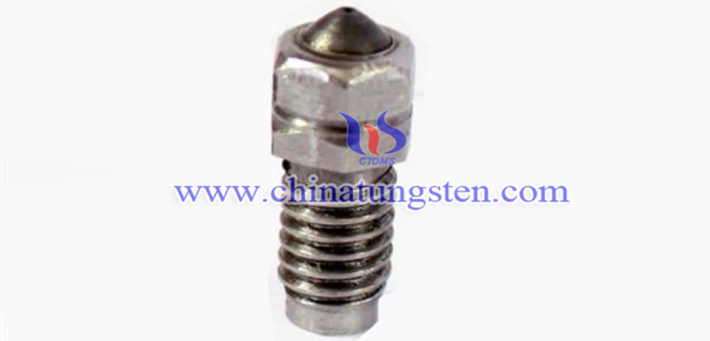Tungsten Carbide 3D Printer Nozzle Was Developed by a Canada Enterprise
- Details
- Category: Tungsten's News
- Published on Monday, 26 February 2018 13:52
A newly developed tungsten carbide 3D printer nozzle will soon be launched in early March by Dyze Design, a 3D printer accessory developer from Montreal, Canada. The product promises high flow and abrasion resistance, and is compatible with a range of popular 3D printer brands including Ultimaker, Prusa, Lulzbot, Raise3D, and Robo.
When it comes to additive manufacturing, there are a number of components that can either make or break your print. The 3D printer itself is just part of the equation: finding the right materials, extruders, and nozzles is just as important for maximizing your print’s overall quality. That’s why the 3D printer nozzle interests people.
Using a tungsten carbide nozzle results in high flow rates and consistent print quality, because the wear-resistant tungsten carbide material maintains the same diameter and height “no matter how long or how hard you use it.”, according to Dyze Design.

The Dyze nozzle consists of a tungsten carbide tip and a steel frame structure, which are entirely plated with electroless nickel. Steel was selected for the nozzle’s frame for a number of reasons: its high strength, pressure resistance, and thermal stability.
Dyze says the only potential downside to using steel for the nozzle frame is its relatively low thermal conductivity. However, since the “critical zone for thermal conductivity is the nozzle tip,” the print results are unaffected.
“The high thermal conductivity of both the nozzle tip and body will pump all the required heat to maintain an even temperature while extruding,” says Dyze on its website. “Viscosity highly depends on the plastic temperature for a constant shear rate. The flow pressure will be constant resulting in excellent results and stability. The ease of pushing the filament will give an extra margin for your extruder safety.”
The nickel plating, for its part, is used to improve the 3D printer nozzle’s surface finish, essentially making it more slippery. This, Dyze says, means that plastic will simply slide off the nozzle, resulting in cleaner parts with less risk of drag. It also enables the nozzle to easily process flexible filaments.
In terms of other materials, the Tungsten Carbide Nozzle can purportedly process any type of filament, from PLA and ABS to carbon fiber reinforced materials.
Dyze Design even compared its Tungsten Carbide Nozzle to an Ultimaker nozzle made from brass. After 3D printing the same part from PLA at 210°C with both nozzles, Dyze found the output flow to be increased by a whopping 80 percent using its own nozzle.
- Tungsten Manufacturer & Supplier, Chinatungsten Online: www.chinatungsten.com
- Tungsten News & Prices of China Tungsten Industry Association: www.ctia.com.cn
- Molybdenum News & Price: news.molybdenum.com.cn
- Tel.: 86 592 5129696; Fax: 86 592 5129797; Email: sales@chinatungsten.com



 sales@chinatungsten.com
sales@chinatungsten.com